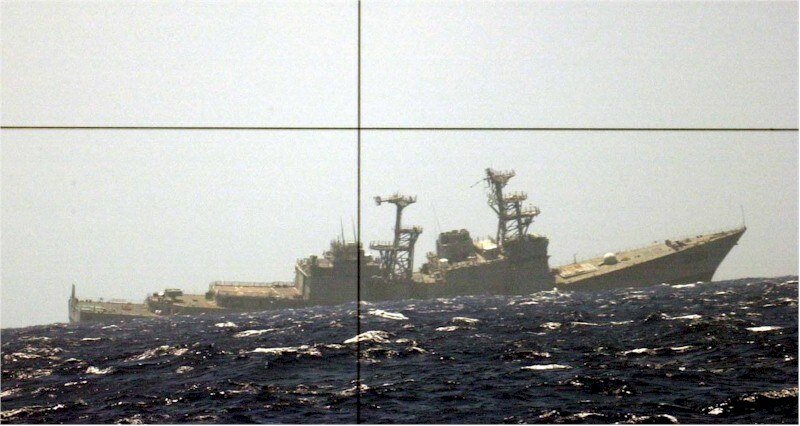That isn't exactly the case, largely because we're talking apples to oranges here. To get a navy that can do naval assaults, you need a lot of training and equipment, and while China may produce the equipment, it needs a lot of time to get the training.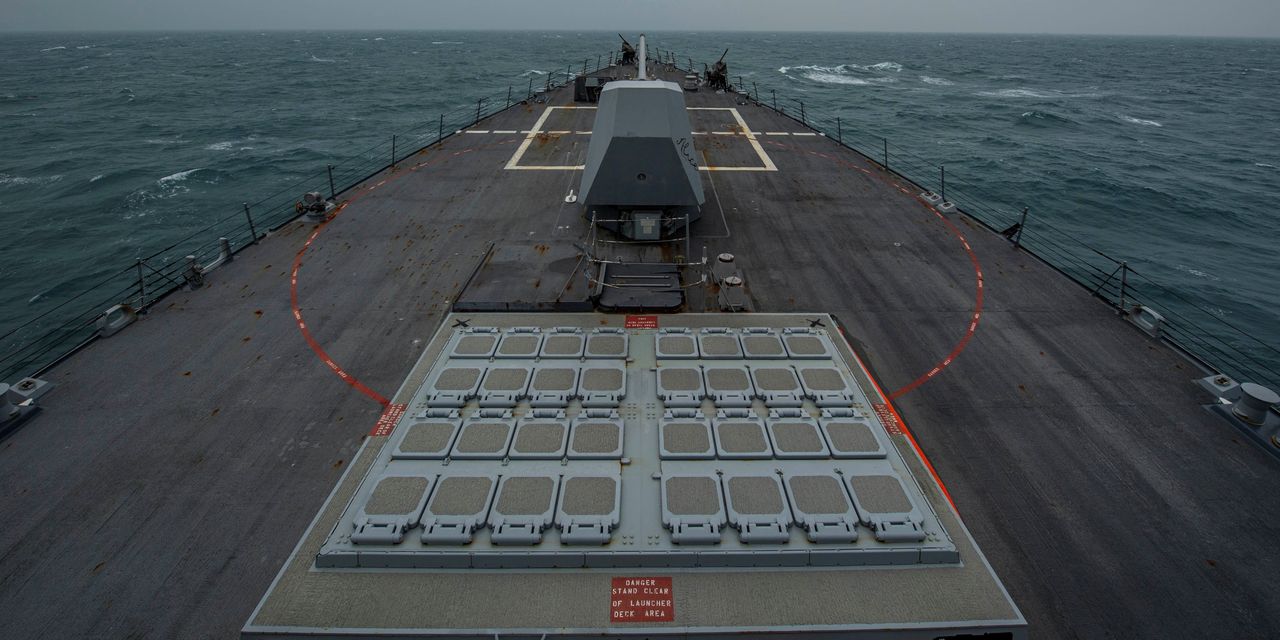
Opinion | The Danger of Shrinking American Naval Power
China may invade Taiwan within six years, admirals warn. Is the U.S. ready?www.wsj.com
Six years? Far sooner than that, I fear.
I'm guessing that that the six year timeframe is the admiral's estimate for that project coming to completion.
I wouldn't bet on it. Maybe TWO. I'm reminded of Gates' 20 year claim for China to produce a stealth fighter.
You are using an out of date browser. It may not display this or other websites correctly.
You should upgrade or use an alternative browser.
You should upgrade or use an alternative browser.
Surface Ships Need More Offensive Punch, Outlook
- Thread starter Triton
- Start date
- Joined
- 3 June 2011
- Messages
- 17,342
- Reaction score
- 9,092
We're not talking about that.That isn't exactly the case, largely because we're talking apples to oranges here. To get a navy that can do naval assaults, you need a lot of training and equipment, and while China may produce the equipment, it needs a lot of time to get the training.
Opinion | The Danger of Shrinking American Naval Power
China may invade Taiwan within six years, admirals warn. Is the U.S. ready?www.wsj.com
Six years? Far sooner than that, I fear.
I'm guessing that that the six year timeframe is the admiral's estimate for that project coming to completion.
I wouldn't bet on it. Maybe TWO. I'm reminded of Gates' 20 year claim for China to produce a stealth fighter.
That's the implication, though.We're not talking about that.That isn't exactly the case, largely because we're talking apples to oranges here. To get a navy that can do naval assaults, you need a lot of training and equipment, and while China may produce the equipment, it needs a lot of time to get the training.
Opinion | The Danger of Shrinking American Naval Power
China may invade Taiwan within six years, admirals warn. Is the U.S. ready?www.wsj.com
Six years? Far sooner than that, I fear.
I'm guessing that that the six year timeframe is the admiral's estimate for that project coming to completion.
I wouldn't bet on it. Maybe TWO. I'm reminded of Gates' 20 year claim for China to produce a stealth fighter.
- Joined
- 3 June 2011
- Messages
- 17,342
- Reaction score
- 9,092
The only person talking about apples and oranges is you. This discussion here is about how long to get the silos operational. Nobody GAF what you think about China's ability to perform a naval assault.That's the implication, though.We're not talking about that.That isn't exactly the case, largely because we're talking apples to oranges here. To get a navy that can do naval assaults, you need a lot of training and equipment, and while China may produce the equipment, it needs a lot of time to get the training.
Opinion | The Danger of Shrinking American Naval Power
China may invade Taiwan within six years, admirals warn. Is the U.S. ready?www.wsj.com
Six years? Far sooner than that, I fear.
I'm guessing that that the six year timeframe is the admiral's estimate for that project coming to completion.
I wouldn't bet on it. Maybe TWO. I'm reminded of Gates' 20 year claim for China to produce a stealth fighter.
"or have strategic deterrence in the form of nuclear parity (when all of those missile silos come online). I'm guessing that that the six year timeframe is the admiral's estimate for that project coming to completion."
Then my reading comprehension got borked.The only person talking about apples and oranges is you. This discussion here is about how long to get the silos operational. Nobody GAF what you think about China's ability to perform a naval assault.That's the implication, though.We're not talking about that.That isn't exactly the case, largely because we're talking apples to oranges here. To get a navy that can do naval assaults, you need a lot of training and equipment, and while China may produce the equipment, it needs a lot of time to get the training.
Opinion | The Danger of Shrinking American Naval Power
China may invade Taiwan within six years, admirals warn. Is the U.S. ready?www.wsj.com
Six years? Far sooner than that, I fear.
I'm guessing that that the six year timeframe is the admiral's estimate for that project coming to completion.
I wouldn't bet on it. Maybe TWO. I'm reminded of Gates' 20 year claim for China to produce a stealth fighter.
"or have strategic deterrence in the form of nuclear parity (when all of those missile silos come online). I'm guessing that that the six year timeframe is the admiral's estimate for that project coming to completion."
- Joined
- 21 April 2009
- Messages
- 13,178
- Reaction score
- 6,077
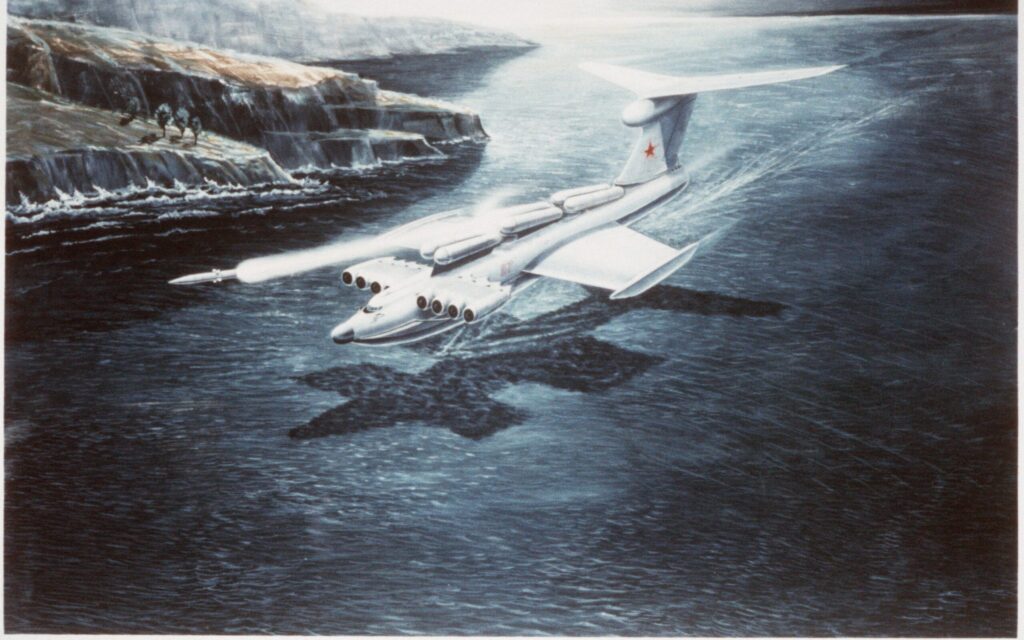
DARPA Hopes A Plane-Boat Hybrid Can Solve The Pentagon's Sealift Challenge - Breaking Defense
A new DARPA solicitation is seeking information about a vehicle class capable of filling the sealift and airlift gaps within the Pentagon's requirements.
jsport
what do you know about surfing Major? you're from-
- Joined
- 27 July 2011
- Messages
- 6,565
- Reaction score
- 3,920
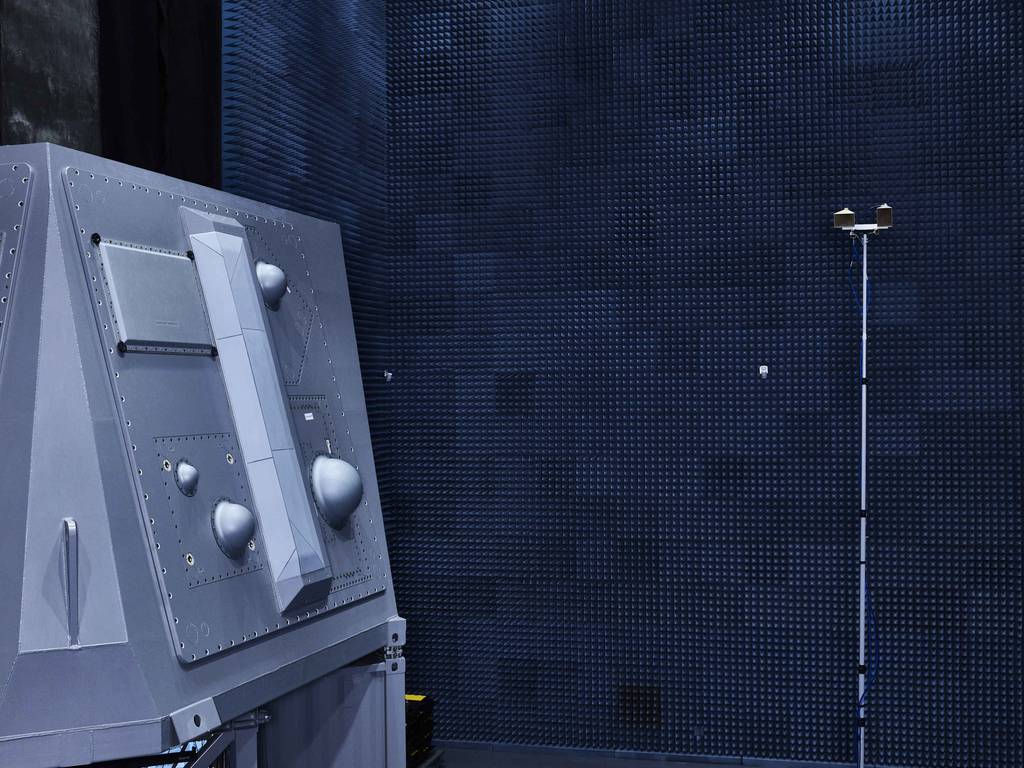
Electronic attack system to provide Navy more capabilities, flexible options
Contractor Northrop Grumman is set to adapt its SEWIP system for larger-deck ships to protect against incoming anti-ship missiles.
jsport
what do you know about surfing Major? you're from-
- Joined
- 27 July 2011
- Messages
- 6,565
- Reaction score
- 3,920
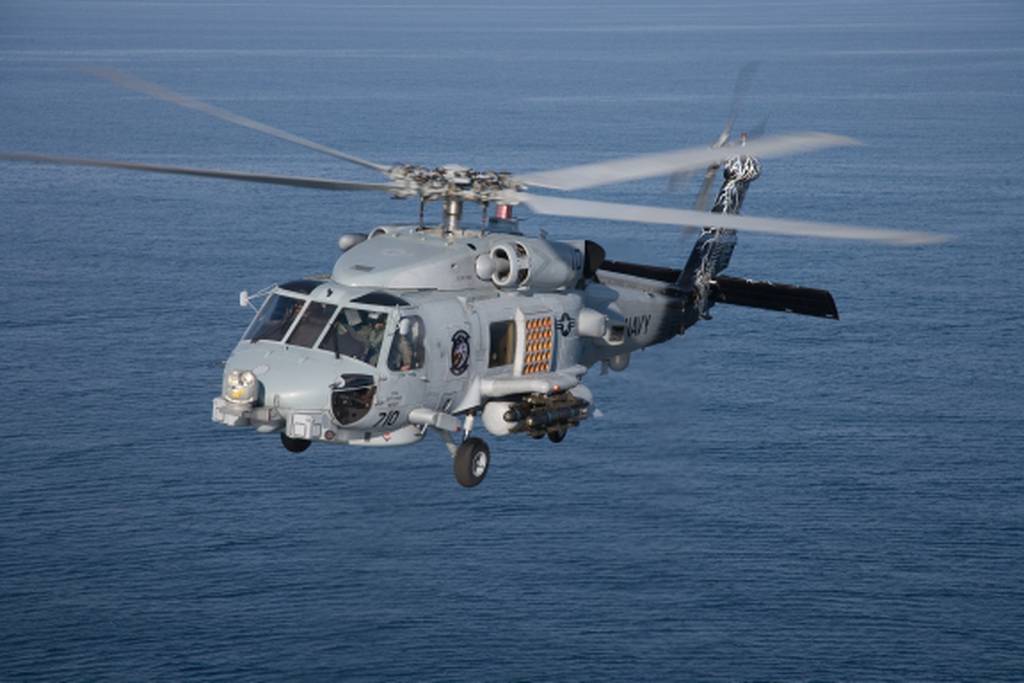
Navy nears production decision on fleet’s electronic warfare system
Lockheed Martin is providing the Navy advanced electronic sensing and protection systems to guard against advanced threats.
jsport
what do you know about surfing Major? you're from-
- Joined
- 27 July 2011
- Messages
- 6,565
- Reaction score
- 3,920
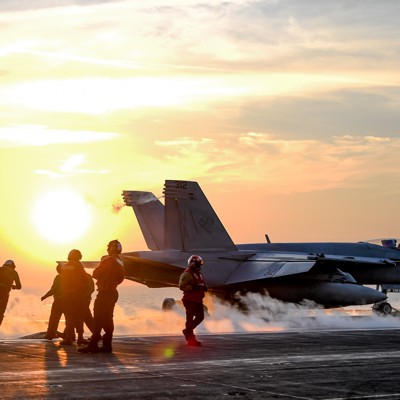
Top Admiral: Defense Firms Are Lobbying Against the Weapons the US Navy Needs
Adm. Mike Gilday also accused companies of slow-rolling ship repair.
- Joined
- 9 October 2009
- Messages
- 19,999
- Reaction score
- 10,530

Lawmakers to debate defense hike, Afghanistan at NDAA markup
Sparring over the size of the defense budget and partisan recriminations over the U.S. exit from Afghanistan are expected to dominate the House Armed Services Committee’s marathon markup of its annual policy bill on Wednesday.www.defensenews.com
Luria said she backs the amendment in part because it would bar the Navy from decommissioning three aging cruisers, would add a second Arleigh Burke-class destroyer and would help stabilize the shipbuilding industry.
“My argument is that of course we have to get new technologies and advance those, but in the meantime we can’t gut the force we have in the hope we’ll have a new force with new technology later,” Luria said. “Essentially, shrinking the Navy is not in line with the statement [from the Pentagon] that China is our No. 1 threat.”
- Joined
- 9 October 2009
- Messages
- 19,999
- Reaction score
- 10,530
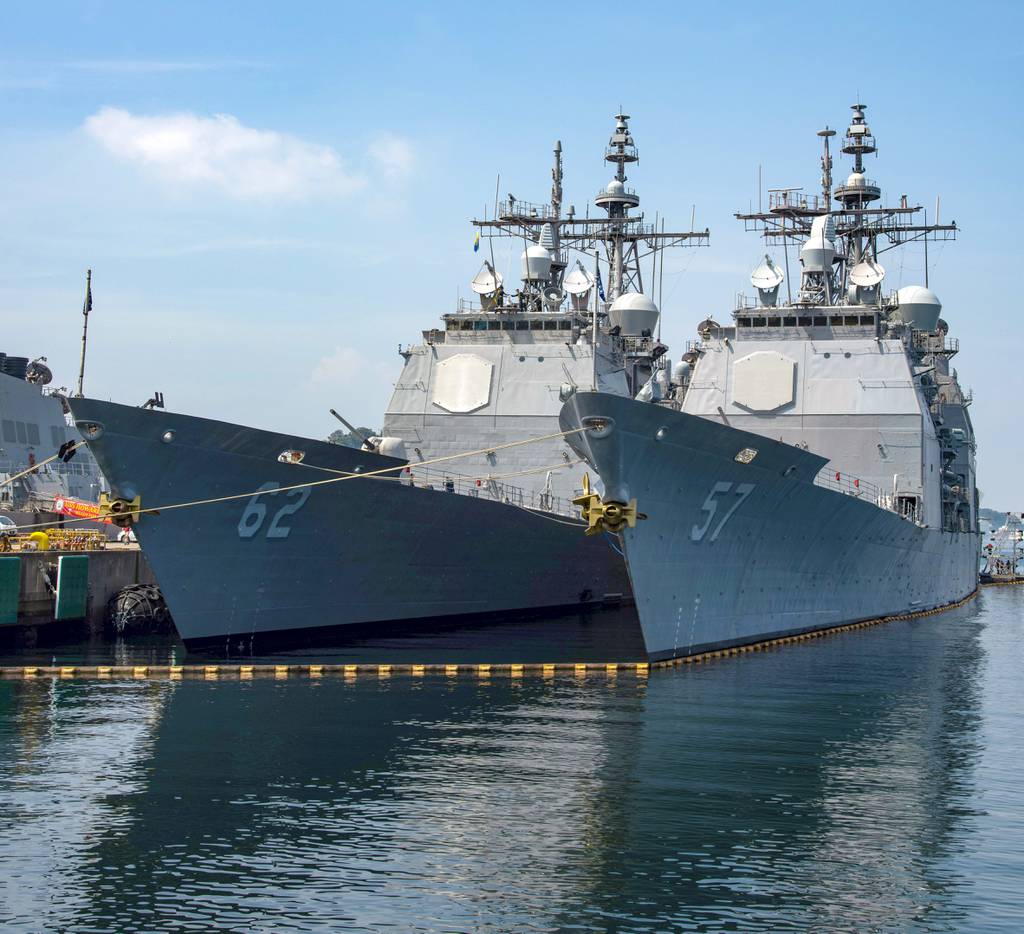
HASC defense bill would allow the Navy to move on from cruisers, refocus on readiness of other ships
Lawmakers are finally ready to let the Navy retire cruisers and turn the service's attention to the readiness of the rest of the fleet.
Hmmmm
- Joined
- 3 June 2011
- Messages
- 17,342
- Reaction score
- 9,092
Ah. More of the "retire what we already have in hopes of finding a replacement ten years down the road" strategy. Awesome. Meanwhile China's churning out Type 055s at a rate the USN couldn't hit in it's wildest dreams.
- Joined
- 9 October 2009
- Messages
- 19,999
- Reaction score
- 10,530
I think he was actually agreeing with you there.
Bhurki
ACCESS: Secret
- Joined
- 16 July 2020
- Messages
- 345
- Reaction score
- 379
What if 'keeping' requires investment that'll be usable for no more than 6-8 years down the line?You retire something when is outdated in function or you have something better.
If you don't have something better you keep it till you do. I was agreeing with sferrin
I guess I said it wrong.
- Joined
- 3 June 2011
- Messages
- 17,342
- Reaction score
- 9,092
Thought that was a typo and you were saying, "if they need to be retired, why not?" My bad.If those ships need to be retired. why now.
isayyo2
Lurker alert
- Joined
- 24 November 2011
- Messages
- 1,035
- Reaction score
- 1,876
Still shaking my head over this, at least sea-swap was canned?"Need"? Like the Spruances "needed" to be retired? Like the Virginias and Californias "needed" to be retired?If those ships need to be retired. why now.
View attachment 663569
Completely useless. (That's a 64-cell VLS upfront BTW.)
jsport
what do you know about surfing Major? you're from-
- Joined
- 27 July 2011
- Messages
- 6,565
- Reaction score
- 3,920
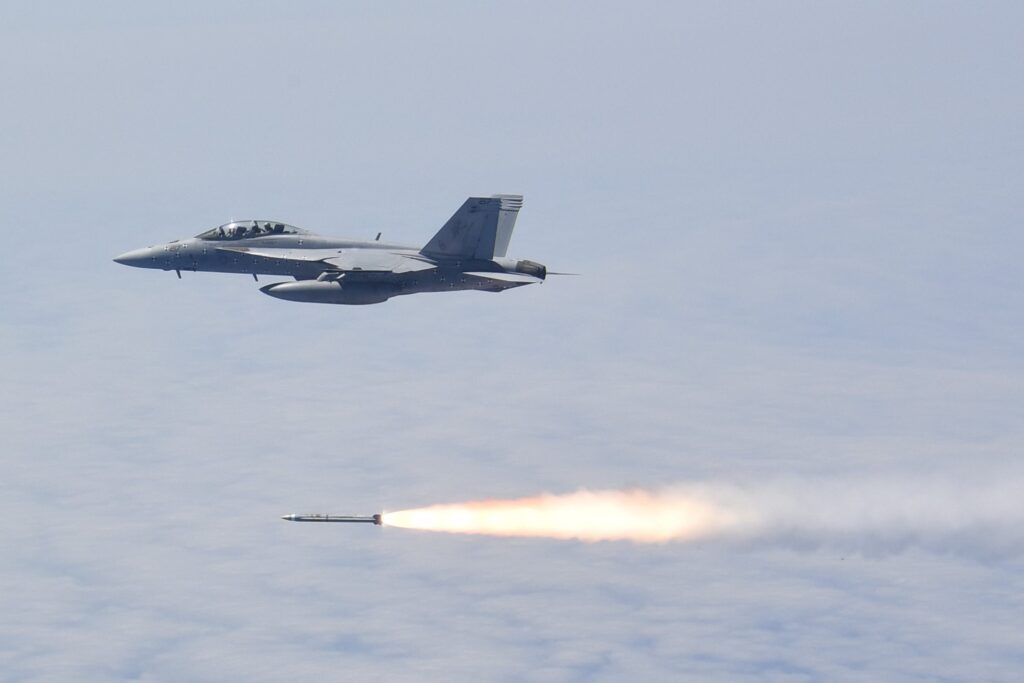
Navy's Anti-Air Defense Missile Readying For Initial Production - Breaking Defense
With the missile past milestone C, the Navy is now clear to award Northrop Grumman a low-rate initial production contract in the coming months.
For one, practically the entire USN that isn't SSN or CVN have been run so ragged that they're falling apart anyway, and that is doubly so for the SpruCans (some of the horror stories about how bad they got by the end are... well... horrifying) and by the time of the end of the Cold War? Burkes made the cruisers largely redundant to a cost-cutting Congress."Need"? Like the Spruances "needed" to be retired? Like the Virginias and Californias "needed" to be retired?If those ships need to be retired. why now.
View attachment 663569
Completely useless. (That's a 64-cell VLS upfront BTW.)
Firefinder
ACCESS: Top Secret
- Joined
- 5 October 2019
- Messages
- 790
- Reaction score
- 1,270
You retire something when is outdated in function or you have something better.
If you don't have something better you keep it till you do. I was agreeing with sferrin
I guess I said it wrong.
I feel the need to point out that like all things."Need"? Like the Spruances "needed" to be retired? Like the Virginias and Californias "needed" to be retired?
Ships have a finite lifespan.
In the Tico case that is a life of 30 years in use with 5 extra for just incase with refits.
The newest Ticonderoga-class cruiser is the USS Port Royal. She was launched in November of 1992, 29 years ago.
Two others were launched that year with the next being in July of 1991, 30 years go, with the oldest the USS BUnker Hill launched in...
Drum roll please...
1984! 37 years ago!
Most of the CURRENT cruisers are pushing 32-33 years of HARD use. They can not be refit or updated anymore, you basically need to rebuild the hull from the keel up and de-rate their speed to baby them to get maybe another decade out of them if we are luckly. But by doing that you are removing any consideration that hull will hold together in the first heavy storm it hits. Also you are basically paying double in maintaining the hull.
And this will not change if we kept the Spruances and the Nuke boats. Most of the Spruancans where pushing 22-24 when they were retire anyways* and the Nuke Cruisers will have need a refueling by 2015 and still be pushing 40 years old. Ancient for an warship, hell they probably have been retired within the last decade if we kept them. Cause those ships had 35 years of design life themselves as well.
By keeping those ships we will have still be in this position today. WITH OLDER LESS CAPABLE SHIPS MIND YOU!
The cancelation of all those 1990s and 2000s ships, like the CG(X) and the Zumwalt snafu is what fucked todays navy up. Cause by now most of those ships be coming online and replacing the tired Ticos. Thankfully the Burke Spam is usefull, it just limiting with what we can do. We going to need a new design NOW if we want a fleet worth the name...
*It should be pointed out that thanks to the Navy bright idea to have two crews per ship, one for port work and one for deployments, with the deployments crews being toss around different ships, each Spruance class hull age ten years in five. Reason for this was because the Crews just didnt care about taking care of them. They did not see the ships as theirs, so the mindset of let it be the NEXT guy issues was strong. This just lead to the ships being trashed like a five year old rental car, with all that implies. The fact that they lasted for most of their design life is telling that they built solidly. But by the time they were retired, they were scrapped, cracks in the hulls, gear permatelly inop, think of a issue a ship can have and they likely had it sadly. The Navy knew this so retired them when they did, basically didnt have a choice. For Refitting them to new was going to cost as much as the Zumwalts did, and we all know how THAT turns out.
jsport
what do you know about surfing Major? you're from-
- Joined
- 27 July 2011
- Messages
- 6,565
- Reaction score
- 3,920

HASC defense bill would allow the Navy to move on from cruisers, refocus on readiness of other ships
Lawmakers are finally ready to let the Navy retire cruisers and turn the service's attention to the readiness of the rest of the fleet.
batigol
ACCESS: Confidential
- Joined
- 8 June 2009
- Messages
- 71
- Reaction score
- 129
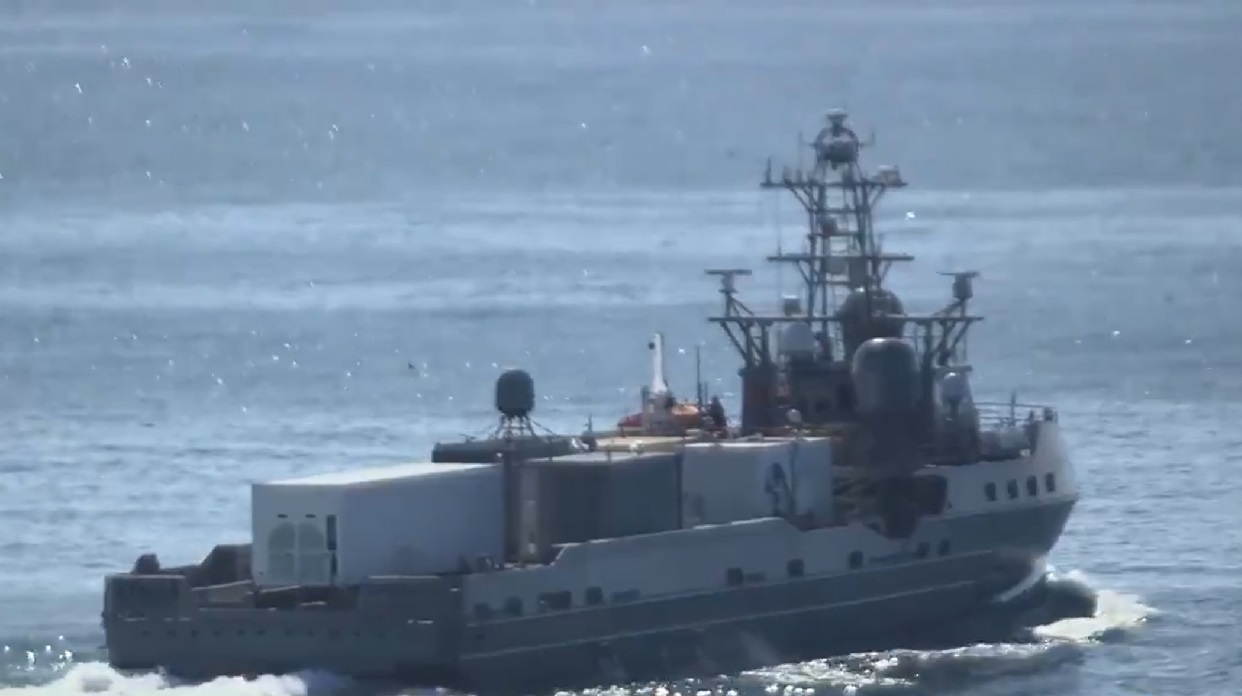
U.S. Navy deploys SM-6 missile on USV Ranger for tests - Naval Post- Naval News and Information
According to a video released by the U.S. Department of Defense, the U.S. Navy deployed four-pack of containerized SM-6 launchers on an unmanned surface vessel "Ranger" for tests.
batigol
ACCESS: Confidential
- Joined
- 8 June 2009
- Messages
- 71
- Reaction score
- 129
For one, practically the entire USN that isn't SSN or CVN have been run so ragged that they're falling apart anyway, and that is doubly so for the SpruCans (some of the horror stories about how bad they got by the end are... well... horrifying) and by the time of the end of the Cold War? Burkes made the cruisers largely redundant to a cost-cutting Congress."Need"? Like the Spruances "needed" to be retired? Like the Virginias and Californias "needed" to be retired?If those ships need to be retired. why now.
View attachment 663569
Completely useless. (That's a 64-cell VLS upfront BTW.)
It's easy to lose sight of this. The commitments that the government is demanding of the Navy and the # of hulls it has available are simply incompatible. The USN has already been complaining about the amount of heavy maintenance it has been forced to postpone because of deployments. And it's not simply a case of just throwing money at the problem to magically produce more ships. We have a limited amount of shipyards. They can either build or repair, not both. The blame falls on both the Navy and Congress for having dithered so long and not coming up with a cohesive shipbuilding and naval strategy until we got to this point. And with lead times being what they are, there needs to be a serious conversation about what we need the USN to do and which areas we are willing to pull back from in order to make sure that job can be done in a sustainable manner.
batigol
ACCESS: Confidential
- Joined
- 8 June 2009
- Messages
- 71
- Reaction score
- 129

HASC defense bill would allow the Navy to move on from cruisers, refocus on readiness of other ships
Lawmakers are finally ready to let the Navy retire cruisers and turn the service's attention to the readiness of the rest of the fleet.www.defensenews.com
From the article
“In 2017, I was the strike group commander for the Carl Vinson Strike Group. My air and missile defense command ship was Lake Champlain,” he continued. “She missed roughly one-third of the deployment because of maintenance things — not because our radar was down, not because our combat system wasn’t capable, not because she didn’t have a full magazine, but she had tank top cracking that required her to get that fixed to be safely underway.”
It's a bit more complex than that, Clinton tried to pull a 'grow the economy to grow the military budget' thing but that didn't exactly work out. Then, shortly afterward, Congress went back to its 'starving the US military of funds' mentality again. One of the things that people forget is that even a few years can have immense consequences. I wouldn't be surprised that we'll be needing a 1000 ship navy when it's all said and done...For one, practically the entire USN that isn't SSN or CVN have been run so ragged that they're falling apart anyway, and that is doubly so for the SpruCans (some of the horror stories about how bad they got by the end are... well... horrifying) and by the time of the end of the Cold War? Burkes made the cruisers largely redundant to a cost-cutting Congress."Need"? Like the Spruances "needed" to be retired? Like the Virginias and Californias "needed" to be retired?If those ships need to be retired. why now.
View attachment 663569
Completely useless. (That's a 64-cell VLS upfront BTW.)
It's easy to lose sight of this. The commitments that the government is demanding of the Navy and the # of hulls it has available are simply incompatible. The USN has already been complaining about the amount of heavy maintenance it has been forced to postpone because of deployments. And it's not simply a case of just throwing money at the problem to magically produce more ships. We have a limited amount of shipyards. They can either build or repair, not both. The blame falls on both the Navy and Congress for having dithered so long and not coming up with a cohesive shipbuilding and naval strategy until we got to this point. And with lead times being what they are, there needs to be a serious conversation about what we need the USN to do and which areas we are willing to pull back from in order to make sure that job can be done in a sustainable manner.
- Joined
- 3 June 2011
- Messages
- 17,342
- Reaction score
- 9,092
Reality is BRUTAL. Lines shut down, people move on, talent is lost, facilities are closed. Companies don't just sit around, with a humming assembly line and trained workforce, waiting for orders to come in.It's a bit more complex than that, Clinton tried to pull a 'grow the economy to grow the military budget' thing but that didn't exactly work out. Then, shortly afterward, Congress went back to its 'starving the US military of funds' mentality again. One of the things that people forget is that even a few years can have immense consequences. I wouldn't be surprised that we'll be needing a 1000 ship navy when it's all said and done...For one, practically the entire USN that isn't SSN or CVN have been run so ragged that they're falling apart anyway, and that is doubly so for the SpruCans (some of the horror stories about how bad they got by the end are... well... horrifying) and by the time of the end of the Cold War? Burkes made the cruisers largely redundant to a cost-cutting Congress."Need"? Like the Spruances "needed" to be retired? Like the Virginias and Californias "needed" to be retired?If those ships need to be retired. why now.
View attachment 663569
Completely useless. (That's a 64-cell VLS upfront BTW.)
It's easy to lose sight of this. The commitments that the government is demanding of the Navy and the # of hulls it has available are simply incompatible. The USN has already been complaining about the amount of heavy maintenance it has been forced to postpone because of deployments. And it's not simply a case of just throwing money at the problem to magically produce more ships. We have a limited amount of shipyards. They can either build or repair, not both. The blame falls on both the Navy and Congress for having dithered so long and not coming up with a cohesive shipbuilding and naval strategy until we got to this point. And with lead times being what they are, there needs to be a serious conversation about what we need the USN to do and which areas we are willing to pull back from in order to make sure that job can be done in a sustainable manner.
If you want a good posterchild of how bad even a few years can be, take a look at the Kriegsmarine between world wars. Just a decade of not doing navy stuff really screwed them over.Reality is BRUTAL. Lines shut down, people move on, talent is lost, facilities are closed. Companies don't just sit around, with a humming assembly line and trained workforce, waiting for orders to come in.It's a bit more complex than that, Clinton tried to pull a 'grow the economy to grow the military budget' thing but that didn't exactly work out. Then, shortly afterward, Congress went back to its 'starving the US military of funds' mentality again. One of the things that people forget is that even a few years can have immense consequences. I wouldn't be surprised that we'll be needing a 1000 ship navy when it's all said and done...For one, practically the entire USN that isn't SSN or CVN have been run so ragged that they're falling apart anyway, and that is doubly so for the SpruCans (some of the horror stories about how bad they got by the end are... well... horrifying) and by the time of the end of the Cold War? Burkes made the cruisers largely redundant to a cost-cutting Congress."Need"? Like the Spruances "needed" to be retired? Like the Virginias and Californias "needed" to be retired?If those ships need to be retired. why now.
View attachment 663569
Completely useless. (That's a 64-cell VLS upfront BTW.)
It's easy to lose sight of this. The commitments that the government is demanding of the Navy and the # of hulls it has available are simply incompatible. The USN has already been complaining about the amount of heavy maintenance it has been forced to postpone because of deployments. And it's not simply a case of just throwing money at the problem to magically produce more ships. We have a limited amount of shipyards. They can either build or repair, not both. The blame falls on both the Navy and Congress for having dithered so long and not coming up with a cohesive shipbuilding and naval strategy until we got to this point. And with lead times being what they are, there needs to be a serious conversation about what we need the USN to do and which areas we are willing to pull back from in order to make sure that job can be done in a sustainable manner.
shin_getter
ACCESS: Top Secret
- Joined
- 1 June 2019
- Messages
- 941
- Reaction score
- 1,199
With every generation of aircraft gaining a magnitude of magnitude of combined effectiveness, and similar performance gain in guided projectile capability, surface ships just does not seem technologically dependent at all. The fact that keeping 40 year hulls is not considered absurd points to slow technological development in technology that dictates hull structure.
The problem with the navy is actually in the disjoint space between design and actual role. The actual role of the surface navy seems to be sailing around to show flag everywhere for whatever reason instead of warfighting. What the navy needs is the enterprise (as in trek, not the carrier) with all the yacht toys.
The problem with the navy is actually in the disjoint space between design and actual role. The actual role of the surface navy seems to be sailing around to show flag everywhere for whatever reason instead of warfighting. What the navy needs is the enterprise (as in trek, not the carrier) with all the yacht toys.
Not really, the real problem is that this isn't the 1st half of the 20th anymore. You can't just have a turnaround of ship design of several months/less than two years anymore. This is also a byline of the 'Reformers' who are complete idiots.Some of these ships were being designed 8 to 10 years before construction
was started. I fear we have lost our way.
Not really, as I said above, this isn't the 1st half of the 20th century anymore. A lot more stuff goes into ships than just weapons, a lot of electronic and software development goes into ships as well. It also doesn't help that Congress would rather keep short-changing the USN than anything else.With every generation of aircraft gaining a magnitude of magnitude of combined effectiveness, and similar performance gain in guided projectile capability, surface ships just does not seem technologically dependent at all. The fact that keeping 40 year hulls is not considered absurd points to slow technological development in technology that dictates hull structure.
The problem with the navy is actually in the disjoint space between design and actual role. The actual role of the surface navy seems to be sailing around to show flag everywhere for whatever reason instead of warfighting. What the navy needs is the enterprise (as in trek, not the carrier) with all the yacht toys.
- Joined
- 4 July 2010
- Messages
- 2,231
- Reaction score
- 2,150
Define "change out." If it's referring to hot-swap modules, even without the (ugly) LCS example it's a concept which has proven to have inherent difficulty out of proportion with the demonstrated utility. If it's referring to base designs which can more easily adapt to new systems in later production blocs and regular refits, well that's exactly the direction the USN hopes to they're headed in with the next generation combatants.Should the navy build more modular designs were you have a basic hull design
that can have a weapons change out instead of purpose built?
Swap-out modularity is a fantasy, I'm afraid. The LCS proved that tidbit rather well. Easy modernization, on the other hand, is what the USN is going with right now.Should the navy build more modular designs were you have a basic hull design
that can have a weapons change out instead of purpose built?
Were I was kinda going with change out your canister launchers.
The cells could be made to the same outer diameter so a large missile
or smaller missile launcher would fit in the same space. Having seen
your post, it appears I was mistaken.
The cells could be made to the same outer diameter so a large missile
or smaller missile launcher would fit in the same space. Having seen
your post, it appears I was mistaken.
- Joined
- 27 September 2006
- Messages
- 5,744
- Reaction score
- 5,639
The main spur to a Navy is the existence of an "Enemy Fleet in Being".
During the Cold War the USN and the Soviet Navy were able to use each other to stimulate further dwvelopments in naval power.
After 1991 there was no EFIB to spur US naval development. From 2001 the War on Terror/Forever Wars made this situation worse still.
The recent decade long growth of the Chinese Navy ought to have woken planners up.
During the Cold War the USN and the Soviet Navy were able to use each other to stimulate further dwvelopments in naval power.
After 1991 there was no EFIB to spur US naval development. From 2001 the War on Terror/Forever Wars made this situation worse still.
The recent decade long growth of the Chinese Navy ought to have woken planners up.
jsport
what do you know about surfing Major? you're from-
- Joined
- 27 July 2011
- Messages
- 6,565
- Reaction score
- 3,920
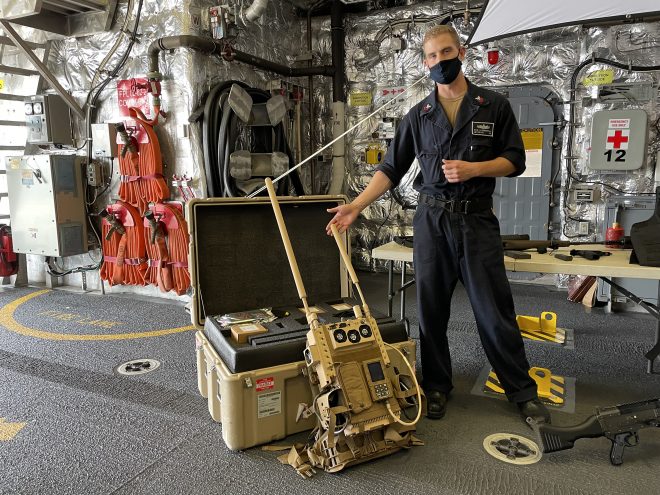
Navy Arming Surface Ships with Drone Repellent System - USNI News
ABOARD THE LITTORAL COMBAT SHIP USS KANSAS CITY, OFF THE COAST OF CALIFORNIA – With the use of drones becoming more prevalent, the Navy has found a way to ensure all of its surface ships can repel unmanned aerial vehicles. The Drone Restricted Access Using Known Electromagnetic Warfare system...
At least they could share engines ,radar and such. That would make
costs less and make them more adaptable. I know that weapons are
a huge cost but don't light arm them. Better to have heavier weapons
and fewer ships than other way around.
costs less and make them more adaptable. I know that weapons are
a huge cost but don't light arm them. Better to have heavier weapons
and fewer ships than other way around.
Similar threads
-
Navy Seeks Rail Guns, Lasers, Cruise Missiles To Improve Pacific Firepower
- Started by Triton
- Replies: 542
-
Russia tests Voevoda missile and vows to build new offensive forces (2 stories)
- Started by bobbymike
- Replies: 0
-
-
-

